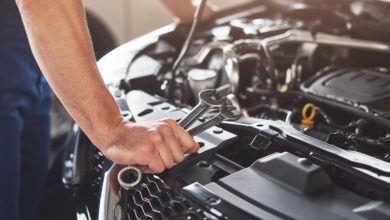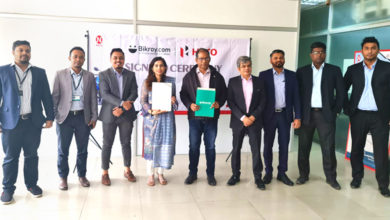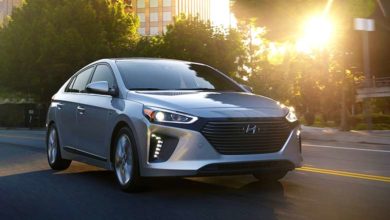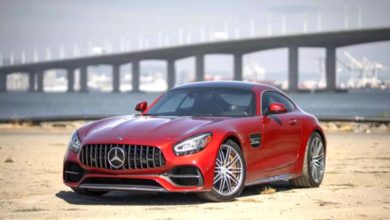A Tale of Maintaining a Honda Cars in Bangladesh

In the summer of the year 2000, my dad decided to get a used second car, and for some inexplicable reason, decided to get an early 90s Honda. To be more specific, a carburetor equipped 1.8 liters four cylinder Accord. It came with a whole bunch of features you simply don’t expect from the 90s three box entry level luxury sedan: automatic climate control, steering mounted cruise control, a CD player as standard and a general level of quality almost unmatched by other Japanese brands in the segment. Check out our infographic on Car Market in Bangladesh Based on 2018 Statistics to get an overview of Bangladesh Cars Market.
We had that CB7 Accord for a good five years, and in those five years, the only things that went wrong were a busted rear left window motor, an often troublesome central locking system, and a leaky radiator that the previous owner had done shoddy repairs on instead of switching it out for a new unit – leading to just two incidents of overheating after my over-enthusiastic brother pushed the car beyond what a ten years old sedan can take. In those five years, however, the only times we had to pop the hood was to refill the brand new radiator we installed and the only time had to put the car up on a jack was when we changed the tires about two and a half years into ownership. For five long years, it was smooth sailing with this three-box Accord with its lovely “glasshouse” interior treatment, never having to change out the shocks because they never groaned, never having to replace a part (other than the radiator) under the hood since nothing ever actually went wrong.
Couple of years later, we would get yet another Honda, this time a 1992 CB5 Inspire – 2.5 litre straight five motor, 5 speed manual gearbox, wooden panelling, drop dead gorgeous looks in a body that stretched into infinity. By all instances, the CB5 Inspire was a worldwide flop – it was too complicated with its straight layout engine and transverse front-wheel-drive gearbox, it shared very few parts with the regular Accord, making it difficult to source parts for it, it was too thirsty for fuel and the wheel bearings were so fragile you could break them if you went over a speed breaker too fast.
We know, because that’s what my brother did. Going over a mammoth speed breaker at 70 km/h, the front left wheel gave away and decided to point left while the right wheel pointed straight. With the left side wheel bearing sheared straight through, we had to leave the Inspire on the road while we frantically called all our Honda parts dealers. After five failed attempts, we finally got through to one shop in Nikunja that had the wheel bearing in stock – they quoted us 22,000 Taka for one wheel bearing. Compare that to the 12,000 I had to dish out for a SET of wheel bearings for a 1993 Toyota Vista, a relatively expensive Toyota to maintain, and the horror stories of maintaining a Honda in Bangladesh are put into clear perspective.
Or are they?
Fast forward to 2010, when a dear friend decided to get a brand new FD Civic from DHS Motors, the authorized dealers for Honda vehicles in Bangladesh. With the choice of Civic versus yet another Premio on the roads, my friend, at my advice, decided to go with the funky, spacious, out-of-this-world-then Civic. Over the course of five years of ownership and one horrifying accident, the Civic remained a faithful beast of burden, happily carrying him and his family all over Bangladesh in their travel focused lifestyle. It flipped onto its roof in that accident, saved the lives of my friend and the other occupants, was restored to perfection using genuine parts from Japan and yet wasn’t as much of a dent on the wallet as it could’ve been, or should’ve been, if you are to believe the people who say maintaining a Honda in Bangladesh is a hassle. Even though it flipped on its roof and was unrecognizable, after a thorough restoration by trained engineers at a reputed workshop, it was driven for three more years without a single squeak or rattle or mechanical failure. So impressed was my friend that he went on to buy another Honda – a 2014 Vezel.
When considering the parts for maintenance – oil filter, air filter, plugs, and general servicing – both of these modern Honda’s were just as cheap to keep going as any modern Toyota. The cost of replacement parts were also similar, only slightly higher than that of Toyota’s since Honda replacement parts never have replicas whereas the market is always flooded with Chinese, Taiwanese, Thai and apparently “genuine” Japanese parts for Toyota’s – thereby reducing the cost since there are so many replica parts out there.
That right there is the core philosophy of owning a Honda in Bangladesh and maintaining it properly – choose the right car, avoid the flops, don’t be stingy when buying replacement parts and treat it with respect. It really is true what they say about Honda replacement parts – replace an original broken part with a genuine replacement and the replacement will last you forever. As anyone who has owned a Toyota will know, this is quite different from what they’ve experienced with Toyota replacement parts. Honda parts may be, depending on the application, about 20-30% more expensive than Toyota parts, but they’re almost always guaranteed for life.
Currently, we own a 2004 Civic that is being treated with love, care and respect. The minute something goes wrong, it is checked out – if it’s an original component that needs to replaced, it is replaced with genuine parts by mechanics with experience of working on Honda’s. That’s all it takes to own a Honda in Bangladesh and own it well.
Buy your favorite new or used car form thousands of cars ads in Bikroy.com.





| Cars for Sale in Dhaka | Cars for Sale in Chattogram |
| Cars for Sale in Dhaka Division | Cars for Sale in Khulna Division |
| Cars for Sale in Sylhet | Cars for Sale in Chattogram Division |












